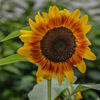+/- EV
Sep 12, 2012 19:42:04 #
I thought when photographing bright landscapes ie. snow, you would under expose. What is the rule?
Sep 12, 2012 19:50:30 #
If I remember,
When photographing snow, the sensor thinks it is seeing neutral gray and you get a darker image. One increases the amount of light.
If I am incorrect, others will correct me quickly.
When photographing snow, the sensor thinks it is seeing neutral gray and you get a darker image. One increases the amount of light.
If I am incorrect, others will correct me quickly.
Sep 12, 2012 20:50:32 #
lightchime wrote:
If I remember,
When photographing snow, the sensor thinks it is seeing neutral gray and you get a darker image. One increases the amount of light.
If I am incorrect, others will correct me quickly.
When photographing snow, the sensor thinks it is seeing neutral gray and you get a darker image. One increases the amount of light.
If I am incorrect, others will correct me quickly.
Well shoot. Guess my images I took of snow capped mts. and the Athabasca Glacier will be darker than if I had left it alone. Thank you so much for the reply Lightchime. Looking to go back as well as have other opportunities to shoot in snow in the next couple months. :)
Sep 12, 2012 21:10:59 #
I always overexpose by one or two stops. The snow's reflective surface fools the metering system to about 18% grayscale, so you need expose for brighter. Your camera's bracketing feature(if so equipped) will help you with that prob.
Sep 12, 2012 22:46:00 #
_Rex wrote:
I always overexpose by one or two stops. The snow's reflective surface fools the metering system to about 18% grayscale, so you need expose for brighter. Your camera's bracketing feature(if so equipped) will help you with that prob.
Thanks, I'll try that next time.
Sep 12, 2012 23:36:38 #
deanna_hg wrote:
I thought when photographing bright landscapes ie. snow, you would under expose. What is the rule?
Many make that mistake. The rule in bright sun, snow or beach, is to UP your EV by 1 or 2.
The reason is that your camera metering is seeking to make everything gray. If the snow or bright sand dominate your image it will expose to make them gray. You need to up the EV to get them back to white.
Alternatively if you can spot meter on something other than the white stuff that can work too.
Sep 13, 2012 00:19:46 #
MtnMan wrote:
quote=deanna_hg I thought when photographing brig... (show quote)
Thanks MtnMan for the reply. :-)
Sep 13, 2012 00:19:52 #
MtnMan wrote:
quote=deanna_hg I thought when photographing brig... (show quote)
Thanks MtnMan for the reply. :-)
Sep 13, 2012 03:13:18 #
FilmFanatic
Loc: Waikato, New Zealand
Very much depends on what metering mode you use, and what camera. The Nikon color matrix metering should cope with it just fine with no adjustments whereas something without that intelligence like centre-weighted or some other camera equivalents to Nikon's matrix may well struggle.
Sep 13, 2012 06:01:29 #
you could try metering of something darker to up the exposure too but all other suggestions are good.
Sep 13, 2012 06:46:19 #
If your using a digital camera, take photo of snow covered mountain, look at results and adjust camera plus or minus. Personally I would use spot metering and meter off the snow if that's the main subject of the photo and adjust plus or minus from there. I always look at my results in the field, not when I get home.
deanna_hg wrote:
I thought when photographing bright landscapes ie. snow, you would under expose. What is the rule?
Sep 13, 2012 08:02:58 #
deanna_hg wrote:
I thought when photographing bright landscapes ie. snow, you would under expose. What is the rule?
Try metering off of the sky.
Sep 13, 2012 10:18:31 #
tombackman
Loc: RHODE ISLAND
Hello,
Bryan Peterson in his book Understanding Exposure, suggests that you meter off the bright sky.
Bryan Peterson in his book Understanding Exposure, suggests that you meter off the bright sky.
Sep 13, 2012 10:24:15 #
connievloutely
Loc: Quaker State (PA)
Better to under expose then to over expose. Once you lose the detail in the highlights you can never get them back.
When in doubt I look at the historygram.
When in doubt I look at the historygram.
Sep 13, 2012 10:28:58 #
"meter off the sky" needs a bit of clarification.
Spot meter off the deepest blue sky OPPOSITE the sun at an angle approx 45 degrees above horizontal (or 45 degrees off vertical...)
or
Take a reading from a gray card. The correctly metered sky and the gray card should yield identical exposures!
These two techniques are always more reliable than taking a metered reading from somewhere in a snow scene and then boosting by "1 1/2 to 3" stops.
Dave Graham
East River, SD
Spot meter off the deepest blue sky OPPOSITE the sun at an angle approx 45 degrees above horizontal (or 45 degrees off vertical...)
or
Take a reading from a gray card. The correctly metered sky and the gray card should yield identical exposures!
These two techniques are always more reliable than taking a metered reading from somewhere in a snow scene and then boosting by "1 1/2 to 3" stops.
Dave Graham
East River, SD
If you want to reply, then register here. Registration is free and your account is created instantly, so you can post right away.







